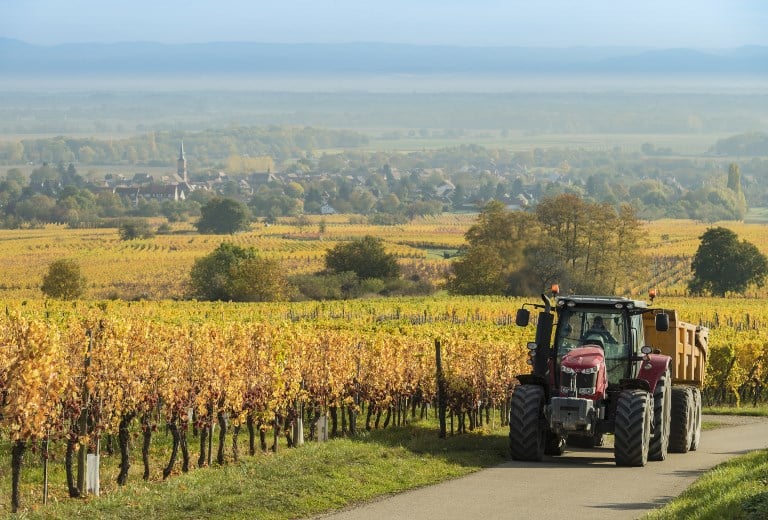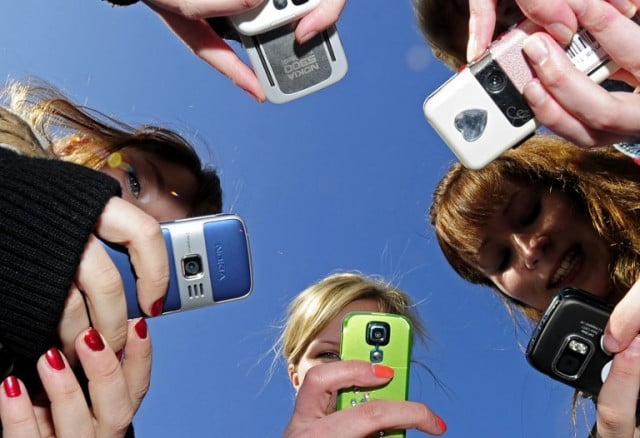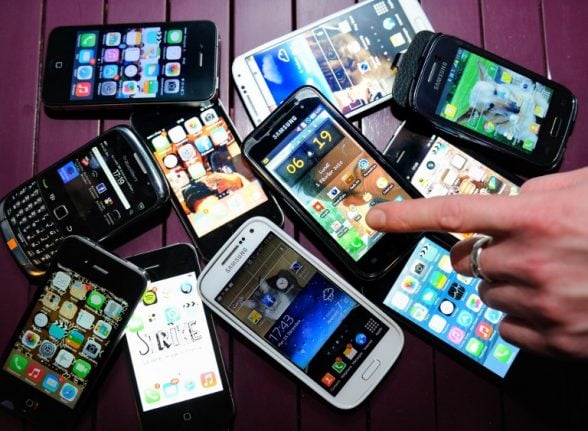Mobile phone coverage in rural France is notoriously patchy.
And although France’s four main mobile providers (SFR, Bouygues Telecom, Orange and SFR) agreed plans earlier this year to bring coverage to the country’s most remote areas, this is expected to take until 2021-22 in most areas and up to 10 long years in others.
So, if you’re living in rural France and can’t wait until 2021 to make a decent phone call, which mobile phone provider is the best?
READ ALSO:
- 'Historic deal' to see rural France's hidden corners finally get mobile coverage
- Living in France: So which mobile phone provider should I go with?
 Photo: AFP
Photo: AFP
We asked our readers for their opinions.
The most commented on provider by far was SFR, with many readers giving positive reviews.
Denise Butler Rizzo cited SFR’s affordability and reliability as plus points, writing, “I have a sim only contract for €3.99 per month. 20 gigs of data and free calls in France. Had it for quite some time and SFR Red has been great.”
And Jess Fitz appreciates being able to use SFR Red's mobile internet package as a back-up option, as it “supports wifi calling if you have a poor signal.”
SFR Red is a special offering from SFR which provides deals without asking you to sign a contract and without any conditions placed on how long you have to sign up for, which is likely to make it perfect for people who live in France for just a few months of the year.
There are several packages available at different costs ranging from €5 to €20 in cost.
However, other readers had less positive experiences with the wider SFR offering.
Louise Doddrell complained about SFR’s expensive contracts, poor connection and non-existent customer service, saying that she “had three months with no internet and no phone and once I was supposedly set up, no customer support.”
And her problems did not end there. Despite ending the contract she “paid about €150 for nothing as they took monthly payments from my account even though there was no service.”

Photo: AFP
Statistics from the French Association of Telecommunications Users (Afutt) released in 2018 suggest Louise’s poor experience with SFR was not a one-off.
Affut reported that SFR was the most complained about mobile and Internet operator in France, accounting for 54 percent of all mobile phone complaints nationwide.
SFR aside, some readers recommended using smaller networks for their affordability, rather than their reliability.
F Joseph Leonard-Peray says La Poste Mobile’s prices are so cheap that he can keep his mobile contract running throughout the year, even though he only spends three months out of 12 in France.
Although, he admits that the network might not be that dependable, as he often relies on “phone service from Switzerland in my home along the border.”
And Jennifer Freedman has given up on searching for the best coverage, opting for the cheapest mobile plan instead. Faced with a host of “mediocre” networks, she chose Symacom “because it's no different than the rest but just €1.90 a month for the cheapest plan, which allows plenty of calling and texting.”
The only reader to suggest another of France's big four networks was Sarah Schmidt, who stated that she used Free in Haute-Normandie “and typically had zero problems.”
But this recommendation might not help out many other expats living in the French countryside.
According to France's telecoms communications authority Arcep, Free is the least widely available of the big four networks, reaching just 48 percent of the country geographically, while SFR, Bouygues Telecom and Orange all reach over 70 percent.
Arcep has released an interactive map allowing mobile phone users to investigate how good coverage from each of the four main providers is in their area.
But for some rural expats options are limited, to say the least.
Christopher Tyle has been forced to switch between providers as he’s moved around France saying, “I had SFR in Monpazier, and it worked fine. When I moved to Villereal it was useless. So I went with Orange here.”
Similarly, another reader plumped for SFR out of necessity, as it was “the only one with signal in our village in the Limousin.”
As such, the luxury of choosing a phone provider remains out of reach for many rural expats in France. The 'best' provider is often the only one available.



 Please whitelist us to continue reading.
Please whitelist us to continue reading.
No-one seems to have mentioned the pay as you go system,Reglo Mobile.
It is a service offered by the E. Leclerc supermarket chain and you have twelve months on any credit you pay for. When you top up, the twelve month time usage limit starts again from that point.
There are two drawbacks.One is that they charge 1:50€ a month to keep the line open and that you must top up a minimum of 10:€ for international calls on top of whatever you pay to make calls in France.
The coverage throughout France is very good and I have never failed to get a decent signal.
What a ridiculous article. It all depends on where one lives and how much one is prepared to pay. Orange is by far the best the price is not. Free were good at first because they piggy-backed on Orange but now they don’t. SFR covered half my village but had deadspots. Bouygues whom I have at the moment are a good deal and coverage isn’t so bad. This is in the Vendee around Ste Hermine. I’ve had mobiles since 85′, when transmobiles cost £1000 and it was like carrying two bricks around.